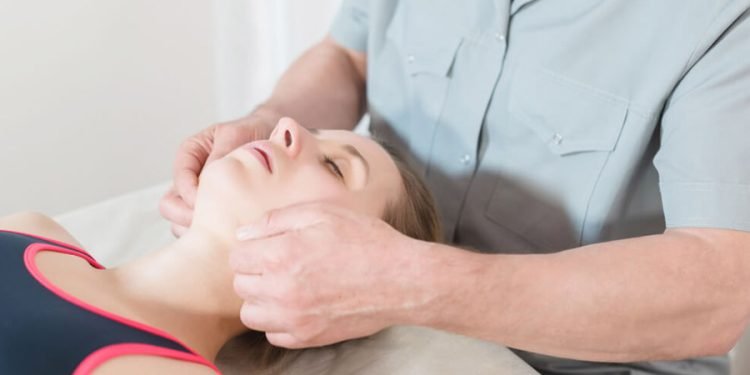The temporomandibular joint, or TMJ, is the point on either side of your head where the jawbone attaches to your skull. Chronic pain or dysfunction at either or both of these joints is called temporomandibular joint disorder, or TMD. Some people say “TMJ” when they mean TMD. Regardless of what you call it, physical therapy in Cherry Hill can help make it better.
What Symptoms TMJ Disorder Causes
The pain of TMD may be arthrogenous, meaning that it comes from the joint, specifically the soft tissues. It can also be myogenous, meaning that it originates from the muscles of the jaw. The two types of TMJ disorder are not mutually exclusive; some cases may be both arthrogenous and myogenous in nature.
Symptoms of TMJ disorder may occur on only one side of the jaw or both at the same time. The most common symptom is pain in the jaw, which may get worse when you chew. When you try to open or close your mouth, you may hear popping or clicking sounds, or your jaw may get stuck when you try to close it.
The TMJ is right in front of the ear, and TMJ disorder sometimes causes tinnitus, which is ringing in the ears, or earache. Pain from TMD may occur throughout the face, radiate to the neck, or cause headaches. If you’re wondering, “Should I consider going to TMJ physical therapy near me?” the answer is yes if your symptoms are severe enough to interfere with your normal activities or have lasted a long time without getting better.
How Physical Therapy Can Help
Your first appointment with a physical therapist is an evaluation. The physical therapist gathers information about your symptoms and makes a diagnosis as to the probable cause of them, e.g. whether they are arthrogenous, myogenous, or both in nature. Having determined the most likely cause of your symptoms, the therapist works with you to create a treatment plan to address your symptoms.
You may wonder, “What happens when I go to physical therapy near me for TMJ disorder?” Every individual case is different, but one of the first steps may be pain relief modalities to lower your discomfort to the level where you can work. Ice, heat, and ultrasound therapy are all examples of possible treatment modalities. Then your therapist may teach you exercises that you can do to improve joint mobility and address any imbalances between the muscles on either side of your jaw.
If soft tissues in the jaw have displaced, it may be necessary for your therapist to perform a manual mobilization of your jaw to help guide the tissues back in place. One of the most common causes of TMJ disorder is poor posture, such as sitting or standing with the head forward and the shoulders rounded. Your therapist may provide instruction to help you improve your posture and prevent future problems.
Where To Find The Right PT for You
Before choosing a physical therapist, you should verify his or her credentials. Try to find a specialist in treating TMJ disorder, i.e., someone who has undergone a postgraduate residency program or has at least 2,000 hours of experience treating TMD.












